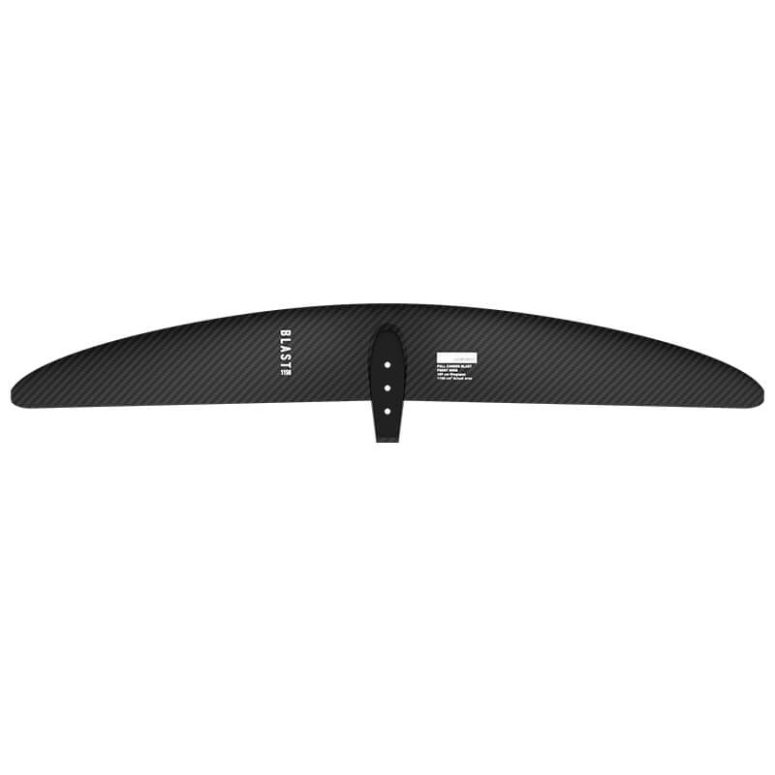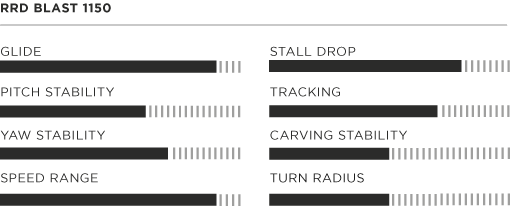

When you purchase gear through links on our site, we may earn a small commission. Here’s why you can trust our tests and our affiliate partner.

With the continued growth of downwinding as showcased by the Voyager foiler crew, James Casey, and plenty of other downwind frothers, more and more brands are developing foils which deliver on the core requirements of glide and efficiency to allow riders to chase endless rides on rolling swells.
We’ve already tested the Blast 900 which impressed with its speed and downwind potential when winging, namely thanks to its thin profile and aspect ratio of 9.6 which left us wondering what its bigger brother, the 1150, would have to offer in lighter winds and specifically when downwinding. With a higher area, naturally the wingspan is slightly wider at 109cm, though this is no different to comparable foils on the market and the 1150 also has a slightly higher aspect ratio of 10.3. What does stand out, as with the 900, is the negative dihedral which we previously had experienced to allow the 900 to roll nicely into turns.
This time round, given the focus on downwinding, we tested the foil with a 75cm aluminum mast, 66cm fuselage and 195cm2 Blaze stab both with the RRD Beluga LTD 65L wingboard and a few SUP downwind boards winging, downwinding and SUP foiling in waves. As has been mentioned in previous reviews of various foils in the RRD modular system, the assembly of the foil is solid. Single tool assembly thanks to M8 T40 bolts across the board makes your life easy with bolt sizes printed on the various components.
Whilst the Blast 900 was a fun foil to ride in waves and with the wing, it didn’t quite have the low end to really fully tap into some of the slower and smaller bumps, which makes sense and makes it best suited to mainly winging and foiling bigger swells. The 1150 on the other hand is a whole different beast. With a much lower stall speed and low end. Combined with RRD’s 5m Gold wing, it was possible to get this foil going in 12 -14 knots using the RRD Beluga LTD wingboard and once on foil, the speed and efficiency of the Blast created enough apparent wind that made if feel like we were almost overpowered as when tacking back upwind. Like its little brother, the 1150 is an upwind machine which again confirms why both 900 and 1150 Blast foils are RRD team favorites for lighter wind racing.
We tested the 1150 on weak lake bumps as well as faster North Sea bumps and found the range on this foil to be seriously impressive. It’s easy to maintain your position on the bump despite the bumps being relatively slow and weak at times and often when it felt like we were close to stalling, especially on the lakes, the 1150 just kept gliding making line choice easy and giving you plenty of room for error. Handling wise, despite the added span, the anhedral of the foil means it rolls into turns almost as well as the 900 and the 195cm2 Blaze stab paired really well, allowing for good handling which was especially notable when having to perform s-turns on more tightly bunched bumps (which was not a problem at all). The foil accelerates easily with little effort when pumping allowing you to keep up with bumps, overtake bumps or just link into the next wave. Unlike some of the smaller high aspect foils, it was also possible to recover at quite low speeds and pump back up to speed quite easily. With SUP downwinding being the current growing trend in foiling, we couldn’t help but to try the Blast out with a SUP. The characteristics that we enjoyed winging carried over when on SUP and the low end of the foil makes it more than easy enough to paddle up.
The Blast 1150 is a versatile foil that opens up the range of conditions in which you can wing and SUP downwind thanks to its generous low end and low stall. As a first foray into high aspects, this foil ticks all the boxes. It is forgiving, allowing you to recover from mistakes when learning maneuvers, and is also the foil best suited to those looking for lightwind performance. Due to the span and the more generous turning circle it’s better suited to rolling swell and mellow waves where you have the space to draw out your turns as opposed to fast surfy waves though it has the speed to be able to surf these straight down the line.
